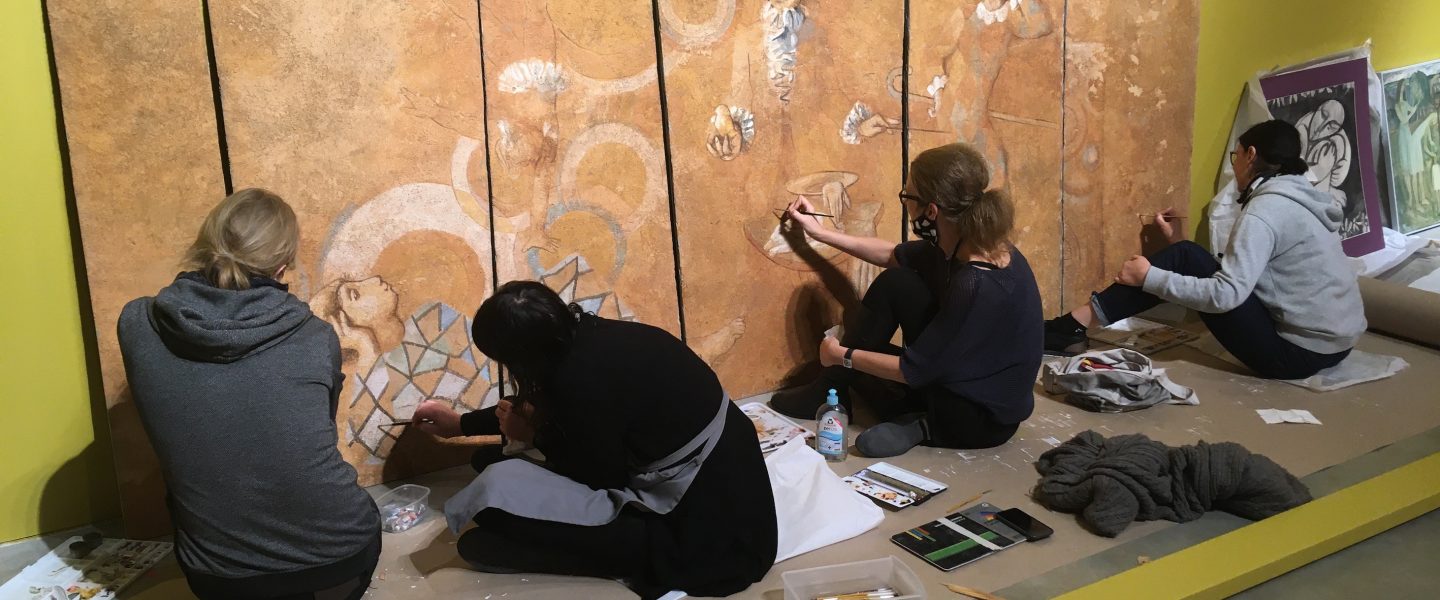
Employees of the Department of Cultural Heritage and Conservation at EKA retouching the fresco by Valentin Vaher before the exhibition. Circus. 1981. Fresco. The panel was removed from the former building of the academy on Tartu Road before its demolition. Part of the graduation project. EAAM.
Dear colleagues and students,
You are kindly invited to join the lunchtime guided tour at the exhibition Invisible Monumental Painting. Monumental art by students at the Painting Department of EKA 1962–1995, organised by the EAAM. The tour will be conducted by Reeli Kõiv, curator of the exhibition and director of the EAAM.
“On the tour, you can see what is visible and hear what is invisible,” says Reeli Kõiv, who has exciting stories to share about works on display, both well-known and unknown authors, as well as works completed as architecture projects and their fates.
You can join the tour through the entrance to the gallery from the EKA atrium.
The exhibition introduces a fascinating collection of monumental painting designs from 1962–1995 stored at the museum, which includes design proposals for various works in all the traditional techniques of monumental painting: fresco, sgraffito, mosaic and stained glass. In order to highlight the technical singularity of monumental painting, 12 completed works are displayed at the exhibition, including stained glass and mosaic pieces made as student works (and graduation projects) as well as two works removed from the former EKA building on Tartu Road prior to its demolition: a circus-themed fresco by Valentin Vaher and fragments from Urve Dzidzaria’s remarkable sgraffito which decorated the walls of the canteen. A video by Kai Kaljo featuring interviews with artists and introducing the fate and stories of the destruction of monumental paintings will also be screened at the exhibition.
The exhibition features 46 artists (and also a few anonymous authors) with a total of 137 works. Most of the works at the exhibition come from the collections of the EAAM, with added works from the private collections of the artists themselves. The oldest exhibit is a fragment of the fresco mural by Dolores Hoffmann removed from Rahu Cinema before its demolition (1962–1963); the most recent work displayed is part of Ivika Luisk’s graduation project in mosaic technique (1995).
Curator of the exhibition: Reeli Kõiv
Exhibition design: Kristi Kongi
Open 8.10–5.11.2020, Tue–Sat 12–18
NB! If you wish to book a separate tour for your department, please contact Reeli Kõiv at reeli.koiv@artun.ee.
